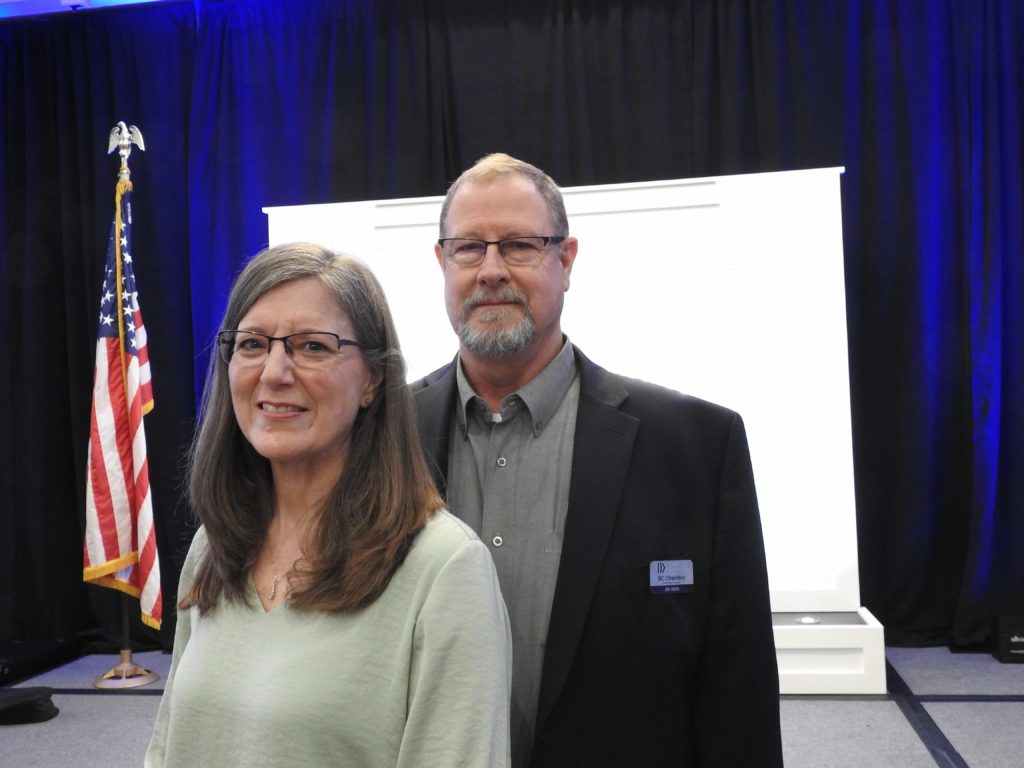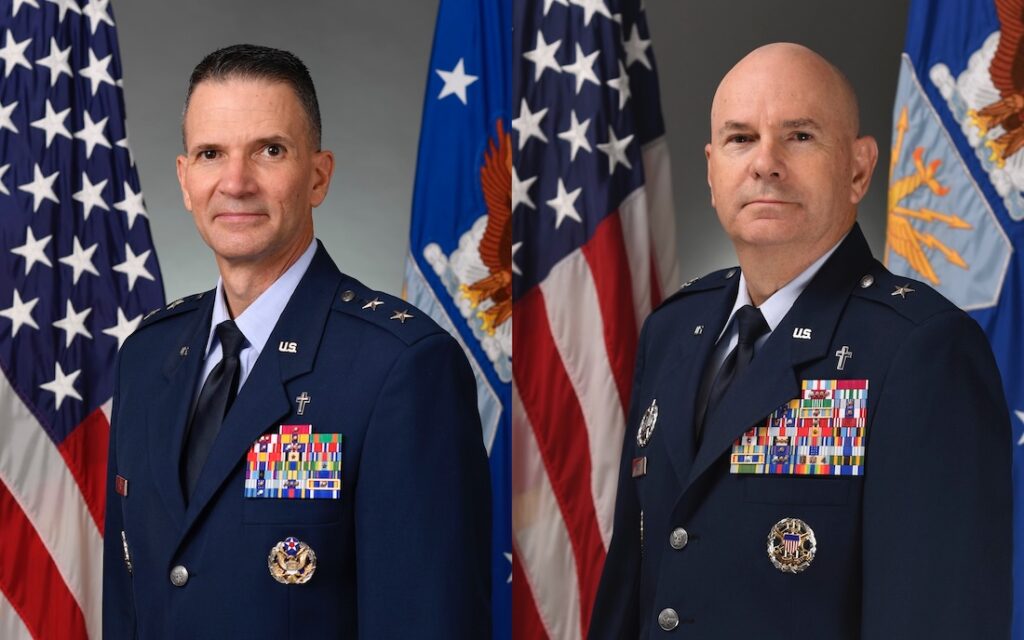No one felt more surprised than I did when Dr. Keith Travis asked me to consider taking the newly created Chaplaincy Consultant for Pastoral Care position in 2008. Dee and I had already sensed God leading us away from the active-duty Army Chaplaincy.
Humbled someone believed that we, as a team, could effectively aid in the ministry of over 3,500 chaplains and their families, our 11-year tenure in this ministry began in June of 2011. I accepted the position of what is now called the Chaplaincy Pastoral Care Manager with John 15:13 as one of the guiding principles – that we “lay down” our lives for others.
Dee and I treasure our time with the SBC Chaplaincy Team and have grown to love so many Chaplains and their Families. We acknowledge God’s grace and mercy in our attempts to care for so many of them who came from multiple chaplaincy disciplines, all walks of life and have served worldwide.
Once I started my position, someone asked me, “How will you connect with so many Chaplains?”
“One Chaplain at a time,” I responded.
It seemed like a simple plan, but it was not so simple to execute. After almost five years, I could honestly report about 1,400 meaningful connections with Chaplains, which fell short of the goal of over 3,500.
Dee stayed actively engaged in trying to build a ministry to Chaplain wives. She came into the office each week for phone and email work. She partnered with me as we traveled to visit Chaplains and their wives and as we ministered with the pastoral care team at conferences. Dee served with me in pastoral care conversations and led the women’s breakout sessions.
We loved it, but we felt tired after a while and we needed rest. In 2015, we took a week at the beach and studied J.I. Packer and Carolyn Nystrom’s God’s Will: Finding Guidance for Everyday Decisions. We realized we needed help and God showed up in a big way as Dr. Kevin Ezell made us aware of the Pastor Ambassadors Program designed to provide mentorship and care to pastors.
This program served as the model for developing what we now call the Chaplain Ambassador Program. It began with four regional Chaplain Ambassadors and has now grown to 10 regional Chaplain Ambassadors and one national Chaplain Ambassador for Women. When asked how many regions I envisioned, my answer was 42 — one for every state convention.
What does it take to become a Chaplain Ambassador? What generates an invitation to serve as a Chaplain Ambassador?
The answer is meaningful experience as an endorsed Chaplain with a demonstrated pattern of communication and relationship with the SBC Chaplaincy Team. This relationship includes regular reporting, attendance at training events and other meaningful contacts. They must have a passion for helping other chaplains and their families.
As Dee and I reflect at the end of our tenure related to Chaplaincy Pastoral Care Ministry, we feel sadness and excitement.
We received outstanding pastoral care from the SBC Chaplaincy Team, beginning with Lew Burnett and culminating in a relationship with Dr. Keith Travis. It has been a joy working with these caring and dedicated Chaplaincy Team members: Dr. Keith Travis, Dr. Doug Carver, Dave Mullis, Randy Edwards, Dr. Brent Bond and Dr. Sam Lee.
I also want to mention our outstanding administrative staff who carry the burden of keeping systems communicating: Noolie Yoon, Carmen Pacheco, Antione Robinson, Robyn Borgula, David Bello, Cathy Thero and Cheryl Castleberry. I’m grateful for all that they have done and continue to do to support the Chaplaincy Pastoral Care Ministry.
On June 30, I will officially retire from the SBC Chaplaincy. Dee and I have learned so much about the myriad forms chaplaincy can take and we have gained a deeper appreciation for the men and women who serve as Chaplains in some of the most challenging times, places and situations in people’s lives.
Dee and I hope that we have helped, encouraged and provided care to many of our Chaplains and their families. We pray that, along with the Holy Spirit and the Chaplain Ambassadors, we have made the challenges of chaplaincy ministry more conquerable. We know that we may have failed some (if not many) of you. It was not due to a lack of care or concern, and we ask and pray for your forgiveness.
What are we planning to do now?
The Lord is calling us to Colorado to live close to our children and grandchildren. They’ve had a challenging journey, and we long to come alongside them, shine the light of Christ more tangibly into their lives and leave a godly legacy for our grandchildren. That work will be our primary focus, although we expect to plug into a church and find some good hobbies!
We covet your prayers as we make this transition and leave this precious ministry that we have come to love.
Thank you to so many who have allowed me and Dee to serve. Thank you to Dr. Keith Travis and Dr. Doug Carver for providing opportunity and leadership, pastoral care and friendship for my family and me.
Thank you to all the SBC Chaplaincy Team members already noted and the NAMB family that loved us well. And, mostly, thank you to the Lord who opened this profoundly wonderful and humbling opportunity to love and serve chaplains and their families. We remain in awe and profoundly grateful.
We love you all.
Timeline SBC Chaplain Ambassadors (NAMB)
| October 2016 | First Four Regional Chaplain Ambassadors (Regions 1-4) | John Barbee, Chuck Conn, Mike Crowell and Harlan Kimball |
| Spring 2017 | Four Additional Regional Chaplain Ambassadors (Regions 5-8) | Ken Brooks, Kim Noble, Jeff Renken and Ken Stice |
| Summer 2017 – Fall 2021 | Various Chaplain Ambassador Changes | Replacements by Bobby Payne (Brooks), Jesse Quintero (Noble), Ric Worshill (Stice), Don Biadog (Conn) and Terry Whiteside (Barbee) |
| August 2018 | First Chaplain Ambassador Training Meeting | NAMB Headquarters, Alpharetta, during August At -Home Weeks (Ongoing) |
| October 2018 | Addition of the National Chaplain Ambassador for Women | Phyllis McMinn Brewer |
| January 2022 | Addition of Region 9 Chaplain Ambassador | Michael Koontz |
| May 2022 | Addition of Region 10 Chaplain Ambassador | Bitrus Cobongs |
Published May 11, 2022



